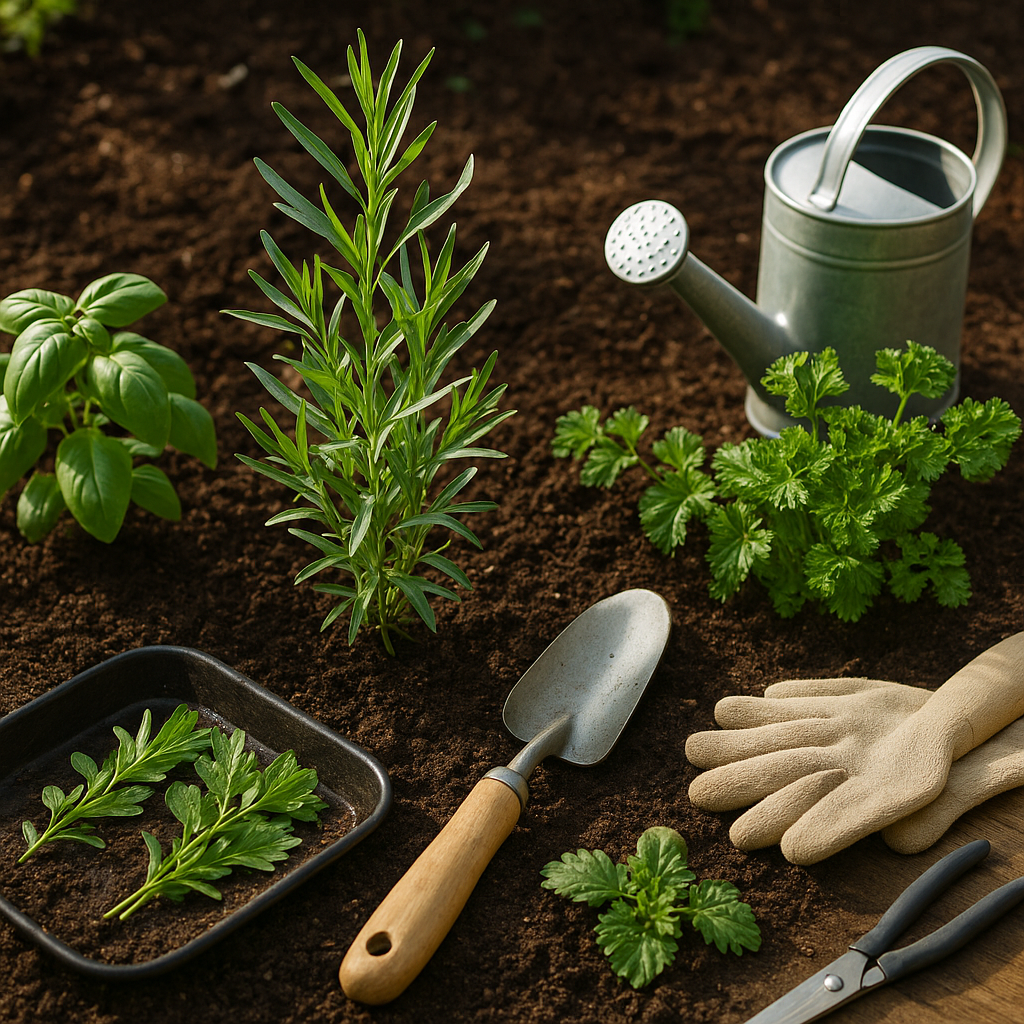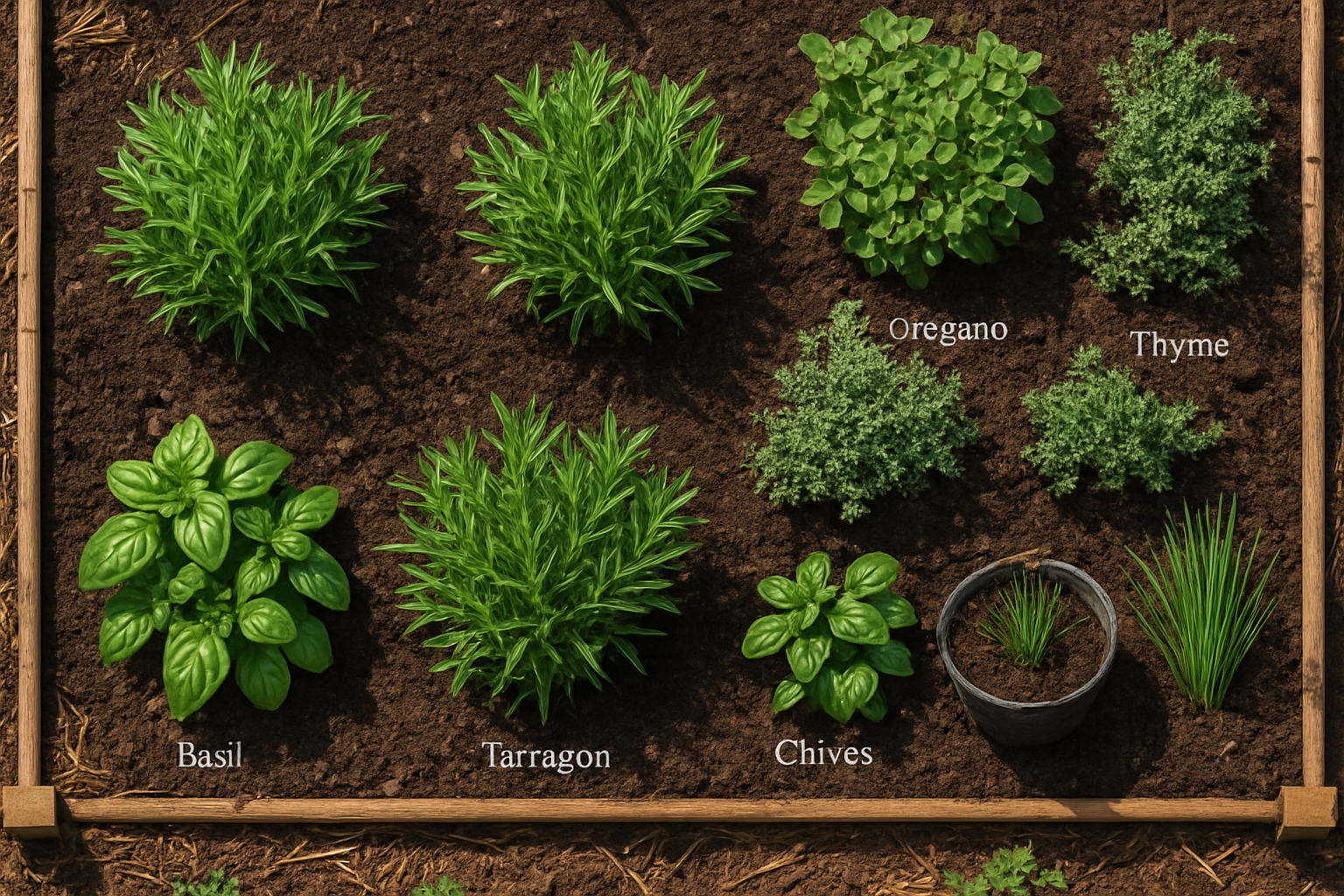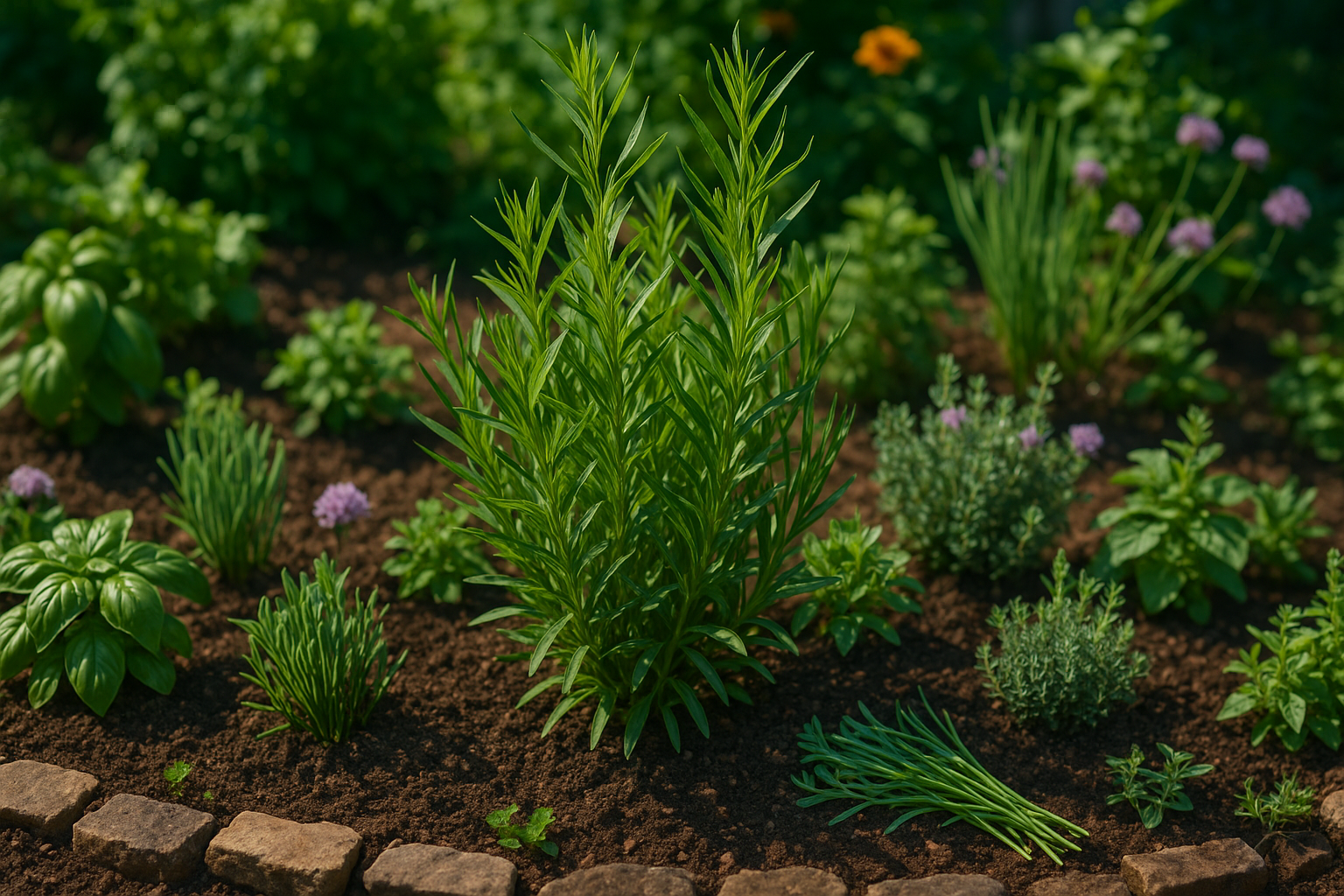Introduction to Tarragon and Companion Planting

Tarragon companion plants can play a transformative role in your herb garden, especially when you want to maximize the rich, slightly anise-like flavor that tarragon is known for. This versatile herb, cherished in French cooking for enhancing sauces, dressings, chicken, and fish dishes, thrives as a perennial in well-drained soil and sunny spots. Tarragon itself is fairly easygoing, but it truly shines when thoughtfully paired with the right plants.
That’s where companion planting comes in—a time-tested gardening technique that brings together plants with mutual benefits. In practice, this means grouping herbs and vegetables so they enhance each other’s growth, deter pests, or even improve the surrounding soil’s health.
Choosing tarragon companion plants isn’t just about aesthetics or saving garden space. For example, planting tarragon near certain vegetables can help keep harmful insects at bay, reducing your reliance on chemical sprays. At the same time, good companions often improve yields and foster a healthier ecosystem in your beds.
Whether you have a sprawling outdoor plot or a small container garden, understanding which plants support your tarragon (and vice versa) makes gardening simpler and more rewarding. With a few thoughtful choices, you can ensure your tarragon—and everything around it—thrives throughout the season.
Why Tarragon Is a Great Companion Plant
Tarragon is a fantastic companion plant thanks to its natural ability to repel a variety of common garden pests, such as aphids and whiteflies, without the need for chemical sprays. Its distinct aroma acts as a gentle shield, keeping unwanted insects at bay while still attracting helpful pollinators like bees.
What’s more, tarragon is incredibly low-maintenance—once established, it tolerates poor soil and infrequent watering, making it a smart choice for both beginner and experienced gardeners.
Beyond pest control, tarragon is known to subtly improve the flavor and vigor of nearby herbs and vegetables, especially eggplant, tomatoes, and peppers. Some gardeners even report that neighboring plants grow more robustly and suffer less disease when tarragon is nearby.
With its dual role as a culinary treasure and a natural, eco-friendly plant protector, tarragon earns its place in any garden bed. By weaving tarragon among your favorite crops, you not only reduce the need for pesticides but also boost your garden’s overall health and enhance the taste of your harvest—a win-win that makes growing tarragon alongside other plants an easy decision.
Best Companion Plants for Tarragon
Tarragon is a versatile herb that thrives alongside a range of classic companions, making it a fantastic addition to your herb or vegetable garden.
Among herbs, basil and chives pair well with tarragon because they share similar soil and sunlight needs, allowing you to group them in the same bed for easy care. Chives, with their mild onion scent, can also help deter pests that might otherwise bother tarragon, while parsley and sage enjoy the same well-draining conditions and help fill garden gaps with attractive greenery.
Oregano and thyme are low-maintenance herbs that prefer drier soils, complementing tarragon’s planting requirements and creating a resilient herb border where each plant benefits from a supportive environment.
When it comes to vegetables, tarragon is a valuable companion for tomatoes, peppers, eggplants, and beans. Tomatoes and peppers enjoy the company of tarragon because its aromatic foliage helps repel pesky aphids and whiteflies, protecting your crops without the need for chemical sprays. Eggplants, prone to similar pests as tomatoes and peppers, also benefit from this natural defense.
Beans add nitrogen to the soil, enriching the environment for tarragon’s shallow roots and encouraging robust growth. Planting tarragon near these vegetables can also lead to subtle improvements in flavor, as nearby herbs influence the taste and vigor of their neighbors—a concept known as “companion flavor enhancement.”
For the best results, place tarragon in spaces where it won’t be overshadowed by larger, bushier companions. Water consistently and watch for signs of overcrowding, as tarragon prefers a bit of breathing room. By taking these steps, you can ensure your tarragon not only survives but truly flourishes alongside a harmonious garden community.
Plants to Avoid Growing with Tarragon
When planning your herb or vegetable garden, it’s important to know that not all plants get along, and tarragon is no exception. Plants from the brassica family, like broccoli, cabbage, and kale, are considered poor companions for tarragon because they have vastly different needs—brassicas prefer rich, moist soil, while tarragon thrives in lighter, well-drained soil. Growing these together often leads to stunted growth in one or both due to competition for nutrients and moisture imbalances.
Another plant to keep away from tarragon is fennel. Fennel releases compounds into the soil that can inhibit the growth of nearby herbs and vegetables, including tarragon.
To avoid these issues, try growing tarragon in its own dedicated space or in a container. This allows you to control soil conditions and prevents any unwanted chemical or root interactions. If you have limited garden beds, simply plant tarragon in a pot and move it around as needed, away from incompatible neighbors.
Lastly, be mindful of overwatering—herbs like tarragon dislike wet feet, so avoid placing them near plants with high moisture requirements. Planning your garden layout with these incompatibilities in mind can help all your herbs and veggies thrive.
How to Plant Tarragon with Its Companions

Planting tarragon with its companions is easier than you think, and a little planning goes a long way toward a healthy herb garden. Start by choosing a spot that gets six to eight hours of sunlight daily, as tarragon thrives in full sun.
Well-drained soil is key—mix in some compost to boost fertility without making the soil too heavy. When it comes to watering, tarragon prefers soil that’s consistently moist but not soggy. Water deeply, but let the top inch dry out before watering again.
Companion Planting Tips
Companions like basil, chives, and parsley do well alongside tarragon—just be sure to give each plant enough breathing room. Space tarragon about 18 to 24 inches from its neighbors to allow for good airflow and reduce the risk of fungal issues.
Use low-growing herbs like thyme or oregano around your tarragon to help shade the soil, save space, and deter weeds.
Layout and Spacing
Arrange your plants in rows or clusters with clear paths so you can easily snip sprigs without stepping on other herbs. Always leave enough room for air to circulate between mature plants.
With good sun, soil, water, and smart spacing, you’ll have a thriving tarragon patch that’s easy to harvest.
Seasonal Care and Common Issues
Caring for tarragon and its companion plants throughout the growing season is essential for a thriving garden. Start by spacing tarragon and neighbors like tomatoes and peppers to allow for good airflow—crowding can trap moisture and encourage fungal diseases.
Water your plants consistently but avoid overwatering. Tarragon prefers soil that’s moist but not soggy, so let the top inch dry out between waterings. Watch for signs like yellowing leaves or moldy patches, which could indicate too much moisture or poor circulation.
Keep an eye out for common pests such as aphids and spider mites, especially if you notice curling leaves or sticky residue. In that case, gently spray with a mix of water and mild soap, or introduce natural predators like ladybugs.
Mulch around plants to retain moisture and reduce weeds, but avoid letting mulch touch the stems. Regularly trim tarragon to encourage bushy growth and pinch off any flowers to keep the leaves flavorful.
If any plant looks unhealthy or stunted, remove it promptly to prevent spreading issues. By spending just a few minutes each day checking your garden, you’ll spot problems early and enjoy a healthy, productive mix of tarragon and its companions all season long.
Creative Planting Ideas and Garden Design Tips
If space is limited, get creative with layout concepts like herb spirals, raised beds, and container gardens—perfect for maximizing small gardens or patios.
Herb Spirals
An herb spiral uses a spiraling mound of soil or stone, allowing you to stack herbs vertically to save ground space and create microclimates. Plant sun-loving rosemary and thyme at the top, and shade-tolerant mint or parsley toward the base.
Raised Beds
Raised beds let you organize crops in neat, productive rows or squares. Consider pairing colorful chard or red-leaf lettuce with green basil or borage for visual variety, and include clusters of marigolds to attract pollinators.
Container Gardens
Container gardens are ultra-flexible—mix compact tomatoes with trailing nasturtiums or create a “kitchen container” of basil, chives, and oregano by the back door for easy harvesting.
Tarragon’s Role
Tarragon, with its slender, willow-green leaves, brings both elegance and function. Let it anchor an herb spiral or fill gaps in raised beds. You can also grow it beside purple sage and chive blossoms for a soft, feathery contrast. Its upright growth draws the eye upward and adds structure to mixed plantings, making your small garden feel vibrant and thoughtfully designed.
